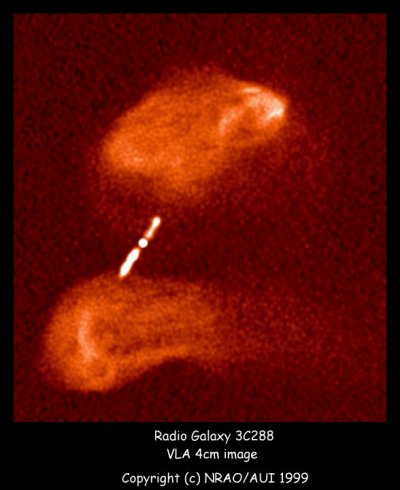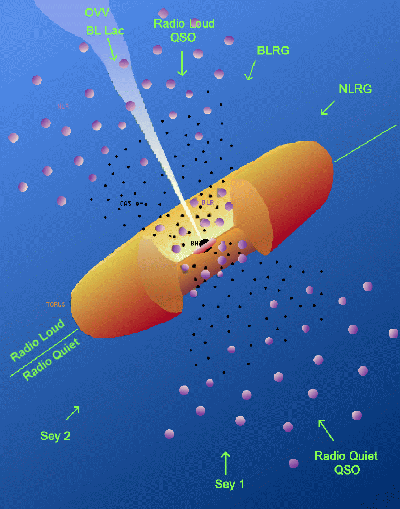
Another distinctive feature of AGN is that some of them are observed to have jets. By some unknown mechanism the black hole, or central engine, produces jets of material which are linear and travel over thousands of light years. These jets emit radio waves which imply that they contain charged particles, most probably electrons, and magnetic fields. They travel at speeds close to that of light, but because of a trick of geometry some look as if they are actually travelling faster than light.
 |
| 3C 288 is a radio galaxy with clear radio jets which eventually inflate lobes. (Image courtesy NRAO) |
The whole family of AGN may be unified by using one model, which is then viewed at different angles. The Black Hole is surrounded by an accretion disc and is producing jets. In the same plane as the disc there are clouds of material in orbit around the black hole, those closer in move faster and so their spectral lines have greater Doppler broadening. The brightest objects are those which are aligned such that we are looking straight down the jet. The emission from the core becomes less and less as the angle from the jet axis increases.
 |
| Schematic of how an AGN looks depending on the angle that we view it by. |
BACK: AGN & Black Holes UP: AGN - Introduction NEXT: X-ray Background